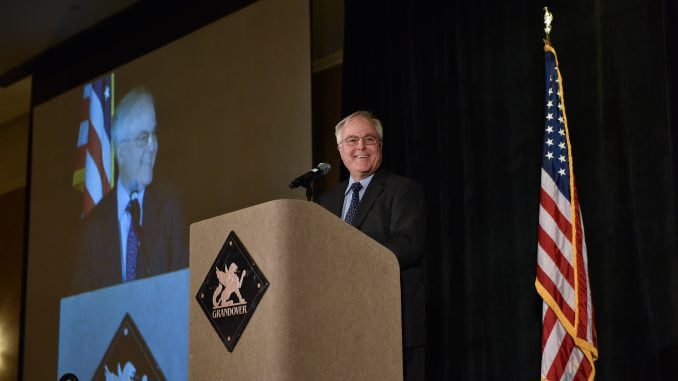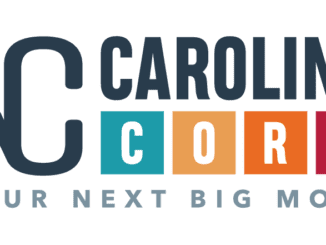
Greensboro, N.C. – Top business leaders, high-ranking public officials and economic development leaders gathered last week at the Wyndham Champions Breakfast to launch a new, cohesive name and brand for the region’s economic development efforts. After a year-long process of engaging stakeholders, business leaders, site selection consultants and the public, 12 concepts were narrowed down to the overwhelming favorite—The Carolina Core.
“The single largest opportunity for transformational job growth in North Carolina lies in the Carolina Core,” said High Point University President Nido Qubein. “There is no doubt that we are stronger together, and the only way we can compete is through regional collaboration. Alone, we are—individual megasites, individual colleges or universities, individual research or industrial parks—but together we are the Carolina Core, and together we will win!”
The Carolina Core is an emerging megasite corridor between Winston-Salem and Fayetteville at the heart of North Carolina bridging the urban corridor with Charlotte and the Research Triangle, including the metro areas of Greensboro, Winston-Salem, High Point, Burlington and Asheboro.
The region is home to four prime megasites with prized access to the east coast shipping channels, plus industrial sites, urban research parks and mixed-use developments.
In the Carolina Core, the project’s visionaries see manufacturing heritage meeting 21st century skilled workforce with more than one million highly-trained and educated workers fueled by the innovation mindset of more than 30 colleges and universities. The Carolina Core is located in the middle of a state, and area that is consistently ranked as one of the best places to do business in the nation with low costs, competitive incentives and first-rate infrastructure.
“We have experienced significant economic development momentum in the Carolina Core, but now is not the time to take our foot off the gas,” said Piedmont Triad Partnership CEO and President Stan Kelly. “Competing states are continuing to get more and more ready for the next big opportunities and we must do the same. To win, we must all come together to tell our story and recognize that a win for one is a win for all.”
Kelly noted that the creation and development process drew upon – and will continue to draw upon – the area’s broad community and civic resources. Collaboration and input from board members, economic development partners, business leaders, site owners, site selection consultants, public officials and other thought partners were all sought in crafting the Carolina Core vision and brand, he said.
State officials are hopeful that the development of four megasites with more than 7,500 acres presents large-scale economic transformation opportunity in central North Carolina. Development partners say combining these megasites with a labor shed of more than one million workers positions central North Carolina as a compelling expansion site for regional, national and global industry.
As a blueprint for the way forward, Kelly refers to a “Think it, Make it, Move it” strategy, one that relies on the innovation of the area’s education and research resources, then taps into the existing and growing manufacturing industries, and finally partners with developing transportation hubs for distribution. The Partnership says that this growth strategy could produce more than 50,000 jobs over the next 20 years in central North Carolina and spur transformational growth in the Carolina Core similar to Research Triangle Park over the last 50 years.
In the short term, Kelly points to the creation of around 2,000 new jobs within the last 12-24 months as evidence that the area’s economic engine is roaring.
Public officials speaking at the event, including Senator Phil Berger and North Carolina Secretary of Commerce Tony Copeland, cited their enthusiasm for and support of the Carolina Core brand and transformational growth strategy.


